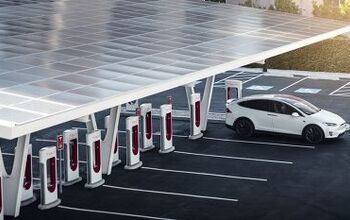These Are the Most Reliable Cars in Each Category, Says J.D. Power
Recent findings from J.D. Power show that after three years of ownership, vehicle dependability has diminished. Owners are reporting more problems compared to the previous year, with the industry average escalating to 190 problems per 100 vehicles (PP100). The disparity in problem rates between the initial 90 days and three years of ownership has surged, indicating a notable decrease in vehicle dependability over time.
Electrified Vehicles: A Mixed Bag
Owners of BEVs and PHEVs report more problems than those with gasoline and hybrid vehicles, with tire replacement being a notable issue for BEV owners.
Segment-by-Segment Breakdown
The study lists the most reliable vehicles across different categories, with Toyota Motor Corporation achieving the most segment awards. Here is an organized summary of the top-ranking models:
Compact and Midsize Cars:
Compact Cars:
- Toyota Corolla
- Honda Civic
- Toyota Prius
Compact Premium Cars:
- Lexus IS
- BMW 4 Series
- BMW 3 Series
Midsize Cars:
- Toyota Camry
- Chevrolet Malibu
- Hyundai Sonata
Midsize Premium Cars:
- Lexus ES
Premium Sporty Cars:
- Porsche 718
- Chevrolet Corvette
Pickup and Van Segments:
Large Heavy Duty Pickups:
- Ford Super Duty
- GMC Sierra HD
- Chevrolet Silverado HD
Large Light Duty Pickups:
- Toyota Tundra
- GMC Sierra
- Chevrolet Silverado
Midsize Pickups:
- Toyota Tacoma
- Chevrolet Colorado
- Ford Ranger
Minivans:
- Kia Sedona
- Toyota Sienna
- Honda Odyssey
Standout Brands
Lexus is recognized as the most reliable brand overall, followed by Porsche and BMW for premium brands. In the mass market, Toyota ranks highest with Buick and Chevrolet in a close contest for reliability.
Methodology of the Study
The study reflects the experiences of over 30,000 owners of 2021 model-year vehicles after three years. It encompasses 184 problem areas across nine vehicle categories to provide a detailed analysis of long-term vehicle reliability.
This article was co-written using AI and was then heavily edited and optimized by our editorial team.
More by TTAC Staff
Latest Car Reviews
Read moreLatest Product Reviews
Read moreRecent Comments
- Redapple2 Do your drinking at home !
- Redapple2 Chicago used to a great town. Shame.
- Redapple2 Why are Tesla sales falling?
- Ras815 It's insane they would go through all of that added expense and time to ship to Italy and back, all for noticeably inferior workmanship on their flagship product. A harbinger of GM's increasingly questionable decision-making, perhaps?
- ChristianWimmer US-spec 380SLs were especially asthmatic thanks to the emissions regulations. In Europe these were considered quite “quick” and powerful. They are slow cars by todays standards but excellent cruisers so this 380SL is perfect for someone who just wants a solid, open-top cruiser and not a weekend drag racer.IIRC the 560SL had a torque advantage over the European 500SL, but the 500SL was ultimately the quicker car.I own an ‘89 500SL R129 and despite the 326-horsepower torquey V8, it’s 0-100 km/h “performance” is held back by the 4-speed automatic and 2-ton weight. Even in their day these cars were not intended for drag racing or 0-100 km/h bragging times. They are cruisers meant to be enjoyed in a responsible manner. Plus, driving faster than 120-130 km/h with the top down or the soft top closed results in high wind noises for the former and a loud fluttering cloth top for the latter. As a result I drive a maximum of 110 km/h on the Autobahn with the top down or 120-130 km/h with the top up.


































Comments
Join the conversation